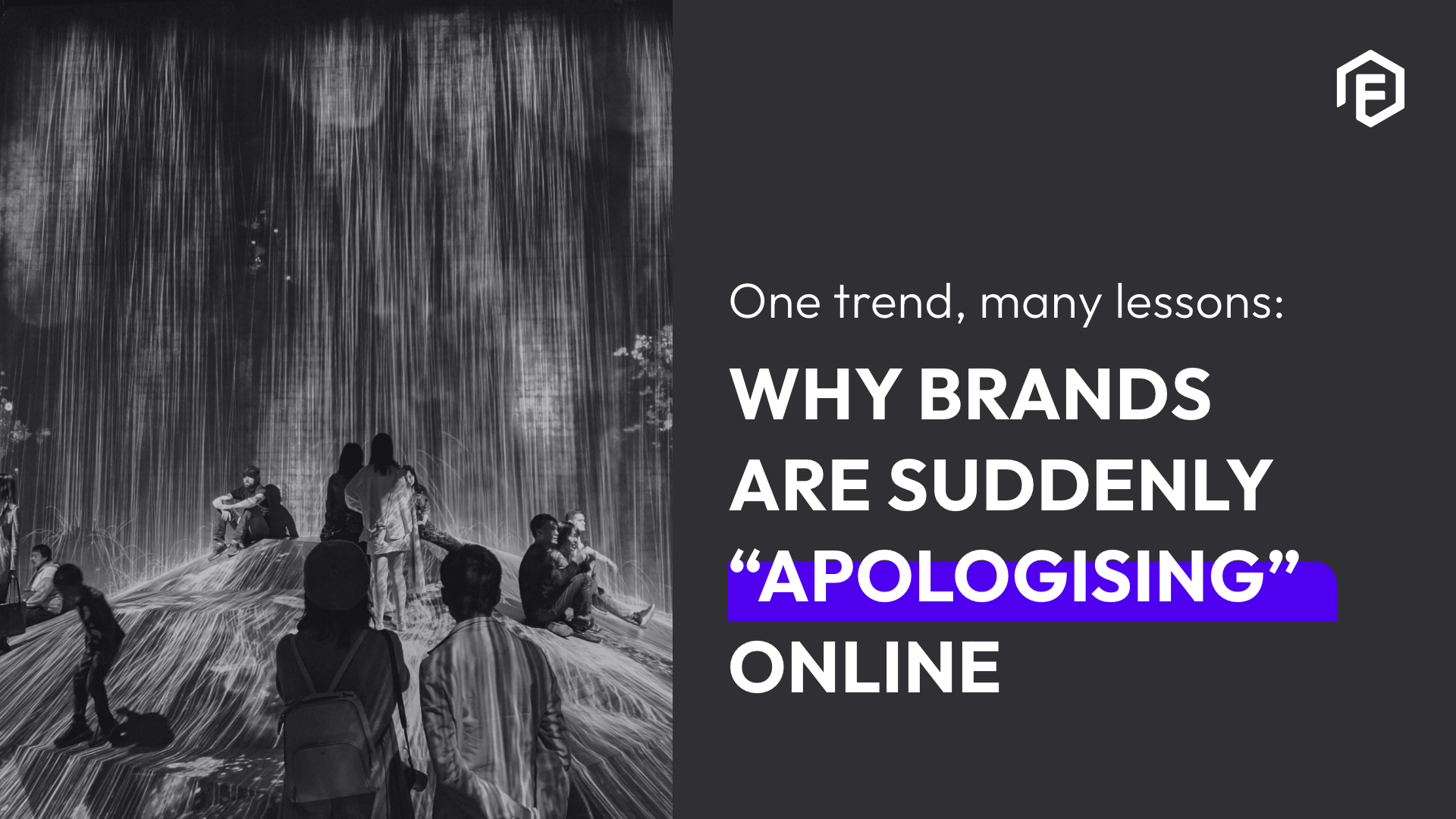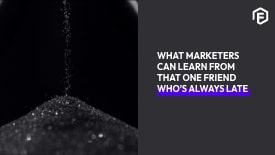Let’s get one thing out of the way: if your content strategy starts with, “What’s trending on TikTok?” you’re already on the wrong battlefield. Creativity isn’t a garnish you sprinkle on your posts at the last second – it is the strategy. It’s not the icing on the cake. It’s the recipe, the oven, and the half-burned kitchen towel you heroically salvaged with flair.
In an age where everyone is armed with a Canva subscription and a vague sense of what “engagement” means, standing out demands more than consistency or competency. It demands ideas. Good ones. Strategic ones. The kind that doesn’t just stop your scroll but makes you stay, think, and (dare we say it) convert.
So if you’re still labouring under the delusion that creativity belongs solely to your “design team” or your “agency,” buckle up. This is your intervention.
Strategy Isn’t a Spreadsheet
Ah, the modern marketing strategy: forty tabs, three dashboards, and a colour-coded calendar no one reads. We’ve all been there. But if your “strategy” is mostly a combination of best practices and recycled hashtags, it’s not a strategy – it’s a habit.
True strategy doesn’t begin with data. It begins with direction. What are you actually trying to say? To whom? And why should they care?
You need ideas that do more than fill a gap in your content calendar. Ideas that answer actual business goals, speak in your brand’s voice (not whatever’s trending), and still manage to entertain the sentient bags of chaos that make up your audience. That requires strategy rooted in creativity, not administrative diligence.
Creativity Gives Direction Its Edge
Direction is important, sure. But creativity is what sharpens the spear. It’s the difference between saying, “We want to build awareness for our product,” and saying, “Let’s release a video series comparing our software to chaotic exes and overzealous flatmates.”
Creativity translates dry objectives into compelling narratives. It turns product specs into punchlines, explainer videos into mini soap operas, and annual reports into something people might actually want to read. It’s the only thing standing between your content and the digital void.
And unlike your fourth meeting of the day, it actually moves the needle.
Creative Ideas Aren’t Plucked from the Sky – They’re Built
There’s a myth that creativity is spontaneous. That great ideas arrive in a flash of genius, often in the shower, or while glaring at a blinking cursor. In reality, effective creativity is constructed, not conjured. And like any good structure, it needs a foundation.
That foundation is built on insight, real, useful insight. Not vibes. What does your audience need, want, fear, mock, or crave? What keeps them doomscrolling at midnight? What makes them click “share,” “save,” or “send to group chat”?
Start there. Then build ideas that intersect that human need with your brand’s truth. It’s not rocket science. It’s harder than that – it’s relevance.
Execution without an Idea Is Just Decoration
Let’s say you’ve nailed your ad placement. The timing is perfect. The design is on trend. The caption ticks every SEO box. And still, no one cares. Why? Because you were so focused on execution, you forgot to start with a compelling idea.
Execution only works when there’s a concept worth executing. Without one, even the slickest production becomes white noise. And frankly, no one has time for decorative content anymore. The audience isn’t obligated to care. You have to earn it.
The Myth of “Just Enough Creativity”
Somewhere along the way, someone decided that being “too creative” was a liability – as if a bold idea might frighten the algorithms or make the boardroom nervous. So, we ended up with a glut of risk-averse content that is technically correct but emotionally vacant.
Congratulations. You’ve blended in perfectly.
This myth of moderate creativity – the idea that you can dial it just high enough to look cool but low enough not to challenge anyone – is the death of effective strategy. Safe ideas aren’t memorable. And forgettable content doesn’t convert.
You don’t need to be outrageous. But you do need to be interesting.
Creative Consistency Beats Creative Chaos
Now, before anyone starts yelling about brand guidelines and tone of voice, let’s be clear: creativity without discipline is just noise. The goal isn’t to shock for the sake of it. It’s to build trust, distinctiveness, and recognition through ideas that evolve while staying true to your identity.
This is where many brands falter. They’ll try a bold idea once, and when it doesn’t instantly go viral, they retreat to safe, bland territory for the rest of the tax year. Commitment matters. You don’t build a reputation on one post. You build it over time with ideas that compound.
Creativity Doesn’t Live in a Department
If your creative strategy hinges entirely on a single overworked copywriter or a junior designer with Adobe fatigue, you’ve already lost. Creativity must be a collective priority, not a job title.
That means strategists, data analysts, media planners, developers – everyone involved in the marketing machine – need to understand and champion good ideas. Not just nod politely at them. Not just water them down with “What if we made it more corporate?” It means pushing for the kind of work that makes people feel something. Otherwise, you’re just managing output, not crafting impact.
Measure What Matters (And No, It’s Not Just Likes)
Of course, creative strategy must deliver. But let’s be clear: if your definition of “working” is “received positive feedback from legal and got ten likes,” you may want to raise the bar. Effective creative content should move something: brand perception, conversion rates, product interest, audience sentiment. It doesn’t always need to be immediate, but it does need to be intentional.
Track the right things. Learn from what resonates. Then do more of it – better, bolder, sharper.
Final Thought: If It Doesn’t Start with an Idea, It’s Not Content – It’s Filler
The internet doesn’t need more filler. It’s drowning in it. What it needs – and what your brand needs – is content with a pulse. That means starting every strategy with an idea. Not just an output, not a format, not a “We saw this work on another account.” A real, creative, relevant idea.
Because in a world where attention is a currency, blandness is the fastest way to go bankrupt.
So stop asking, “Is this on brand?” and start asking, “Is this worth anyone’s time?”
If the answer is yes, congratulations! You’ve just discovered that creativity isn’t just part of the strategy.
It is the strategy.
P.S. Don’t forget to share this article.
Flume is an independent, full-service digital marketing agency providing services that include SEO, web design and development, public relations, media buying, client service, UX/UI, and creative production. For more information visit www.flume.co.za or email us at [email protected] to say, well, “hello”.
-
Frequently Asked Questions
-
1. What does it mean that creativity is the strategy?
- Creativity isn’t just an add-on; it’s the core of an effective content strategy. It involves building compelling, relevant ideas that align with business goals and resonate with your audience, turning generic content into memorable narratives that drive engagement and conversions.
-
2. How can I develop creative ideas for my content strategy?
- Start with insights into your audience’s needs, desires, fears, or interests. Combine these with your brand’s unique voice and objectives to craft ideas that are relevant and impactful. Creativity is constructed through understanding, not random inspiration.
-
3. Why does execution fail without a strong creative idea?
- Even flawless ad placement, design, or SEO won’t matter if the content lacks a compelling idea. Without a meaningful concept, content becomes forgettable “filler,” failing to capture attention or drive action in a crowded digital space.
-
4. Is there such a thing as being “too creative” in content marketing?
- The myth of “too much creativity” leads to safe, bland content that blends in. While creativity should align with brand identity and goals, bold, interesting ideas are essential to stand out and avoid being forgettable.
-
5. How can I ensure creativity is consistent across my content?
- Creativity requires discipline and commitment. Develop ideas that evolve while staying true to your brand’s voice and identity. Involve your entire team—strategists, analysts, and more—to champion creative ideas consistently, building trust and recognition over time.



